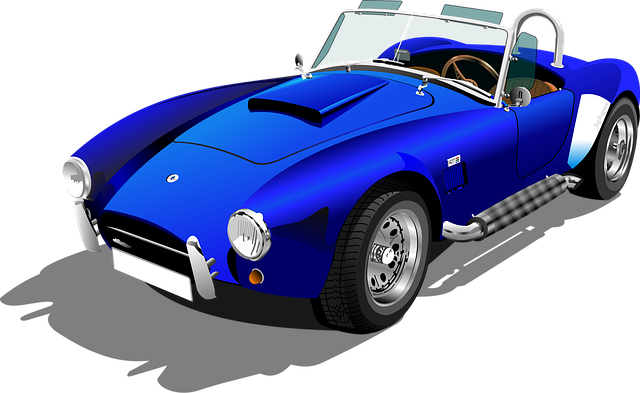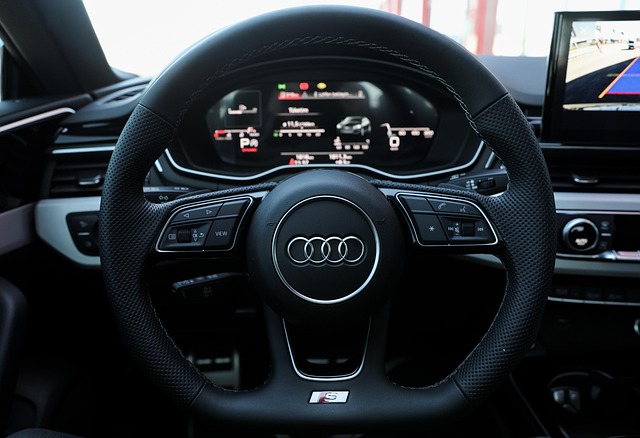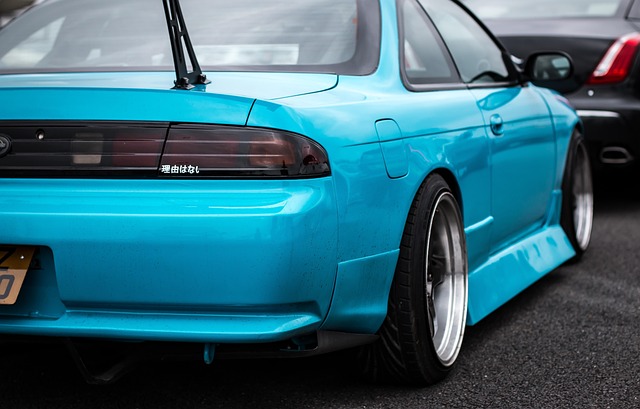The Japanese Domestic Market (JDM) culture significantly influences global automotive preferences, particularly among enthusiasts and collectors. JDM vehicles are celebrated for stringent quality standards, innovative features, compact yet powerful engines, and sophisticated tuning capabilities. Select JDM Cars stand out for their unique handling characteristics, a result of meticulous engineering, lightweight construction, precise suspension systems, and advanced safety features. These cars have evolved from classic models like the Toyota Celica and Mazda RX-7 to modern iconic ones such as the Nissan Skyline GT-R and Toyota Supra. The global community's desire for unique driving experiences and customization fuels their popularity. Future JDM car handling technology promises significant innovation with electronics and sensor fusion, blending traditional appeal with modern efficiency for electric vehicles, ensuring their enduring relevance in the automotive landscape.
“Uncover the enchanting world of JDM (Japanese Domestic Market) cars and their signature handling characteristics—a blend of precision, agility, and raw power. This article explores how cultural preferences have shaped unique automotive experiences. From understanding the JDM culture to deciphering its impact on car design, we delve into the evolution of handling in Japanese performance cars. Discover key components that contribute to their exceptional prowess and explore iconic JDM vehicles that have left an indelible mark on the automotive landscape.”
- Understanding JDM Culture and Its Impact on Car Preferences
- Defining Signature Handling Characteristics in Automotive Terms
- The Evolution of Handling in Japanese Performance Cars
- Key Components Contributing to Exceptional JDM Car Handling
- Real-World Examples: Iconic JDM Cars and Their Handling Abilities
- Future Trends in JDM Car Handling Technology
Understanding JDM Culture and Its Impact on Car Preferences

The Japanese Domestic Market (JDM) culture has significantly influenced global car preferences, especially among enthusiasts and collectors. This unique automotive ecosystem, known for its strict quality standards and innovative features, has fostered a deep appreciation for specific vehicle characteristics. When it comes to selecting JDM cars, factors like precision engineering, advanced safety systems, and distinctive styling often top the list according to expert opinions. The focus on compact yet powerful engines, along with sophisticated tuning tips, has made JDM vehicles highly sought-after in the global car trading market.
This cultural preference translates into a desire for unique driving experiences. Many JDM cars are renowned for their responsive handling and agile performance, appealing to drivers who value precision driving. Furthermore, the JDM culture emphasizes customization and personal expression, leading many owners to modify and tune their vehicles, sharing engine tuning tips and creating a vibrant community around these specialized cars.
Defining Signature Handling Characteristics in Automotive Terms

In the automotive world, signature handling characteristics refer to the unique traits and behaviors that define a vehicle’s performance and driving dynamics. When we talk about defining these characteristics in the context of Select JDM Cars, we’re delving into the essence of what makes Japanese sports cars stand out. These vehicles are renowned for their precision engineering, balancing power and agility in ways that create an engaging and responsive driving experience.
Japanese sports car restoration is not just about reviving vintage models; it’s also about preserving and enhancing these signature handling traits. Unique car builds, whether custom or based on classic JDM platforms, aim to capture the essence of Japanese automotive craftsmanship. Secure car importation plays a crucial role in making these vehicles accessible, allowing enthusiasts worldwide to experience the thrill of driving cars known for their exceptional handling characteristics.
The Evolution of Handling in Japanese Performance Cars

The evolution of handling in Japanese performance cars, often referred to as JDM (Japanese Domestic Market) cars, is a fascinating journey that has captivated automotive enthusiasts worldwide. These vehicles are renowned for their precision, agility, and unique driving dynamics, which have evolved over several decades. The early models from the 1960s and 70s laid the foundation with focus on lightweight construction and rear-wheel drive, resulting in cars like the classic Toyota Celica and Mazda RX-7 that offered engaging handling characteristics.
As time progressed, Japanese car manufacturers refined their techniques, incorporating advanced technologies while staying true to the core principles of agile handling. The 1980s and 90s saw the rise of iconic models such as the Nissan Skyline GT-R and Toyota Supra, which boasted sophisticated suspension systems, powerful engines, and precise steering that elevated the JDM car’s reputation on both the track and public roads. Today, the legacy continues with modern JDM cars that combine cutting-edge performance with the timeless appeal of classic car imports, making restoring Japanese classics and collecting rare JDM models a cherished endeavor for many enthusiasts.
Key Components Contributing to Exceptional JDM Car Handling

The handling characteristics of a JDM (Japanese Domestic Market) car are shaped by several key components that work in harmony to deliver exceptional driving dynamics. One of the primary contributors is the vehicle’s lightweight construction, made possible by advanced materials and meticulous engineering. This reduces overall weight, improving power-to-weight ratio and enhancing agility on the road.
Additionally, JDM cars often feature precise suspension systems tailored for both local roads and winding mountain passes. High-quality shock absorbers and struts absorb road imperfections while maintaining control, ensuring a smooth yet responsive ride. The use of limited slip differentials further aids in optimizing traction and handling during cornering, especially when combined with engine tuning tips designed to enhance performance. These factors, along with import vehicle protection considerations, contribute to the enduring popularity of Select JDM Cars in the market trends, where drivers seek both style and exceptional driving pleasure.
Real-World Examples: Iconic JDM Cars and Their Handling Abilities

In the world of automotive enthusiasts, Japan’s Domestic Market (JDM) cars have carved a unique niche for themselves with their exceptional handling characteristics. These vehicles, often overlooked by mainstream markets, offer a symphony of engineering prowess and driver engagement that captivates those in the know. From the timeless Toyota Supra to the legendary Nissan Skyline GT-R, JDM cars are renowned for their precision handling, thanks to agile suspensions and powerful yet responsive engines.
Consider the iconic Mazda RX-7, a masterpiece of lightweight car building that balances raw power with exceptional agility. Its rear-wheel-drive layout and unique rotary engine create a driving experience unlike any other. Similarly, the Toyota AE86, often hailed as one of the best driver’s cars ever made, showcases impeccable balance and precise control, making it a favorite among those who appreciate the art of cornering. These examples highlight how select JDM cars, with their emphasis on precision engineering and driver involvement, have left an indelible mark in the realm of custom car building and international auto transport, inspiring enthusiasts worldwide to embrace unique car builds that prioritize handling abilities over mere aesthetics.
Future Trends in JDM Car Handling Technology

The future of Japanese Domestic Market (JDM) car handling technology looks bright and innovative. As automotive technology advances, we can expect to see more sophisticated systems designed to enhance performance and driving dynamics. One trend is the increased adoption of advanced electronics and sensor fusion, allowing for precise control and stability in various driving conditions. These advancements are particularly beneficial for JDM cars known for their agile handling, as they can now offer even better cornering precision and improved traction on different surfaces.
Additionally, the rise of electric vehicles (EVs) is set to influence JDM car importation and customization. Professional car importers are exploring ways to adapt these iconic Japanese vehicles to the EV platform, combining their traditional appeal with modern efficiency. This evolution ensures that restorable JDM cars and vintage JDM motorcycles remain relevant in the changing automotive landscape, catering to the passion of Japanese car communities worldwide.
The unique handling characteristics of Japanese performance cars, or JDM cars, have captivated car enthusiasts worldwide. From their precision engineering to innovative design, these vehicles offer an unparalleled driving experience. As we’ve explored through this article, understanding the JDM culture and its influence on automotive preferences is key to unlocking the secrets behind exceptional handling. The evolution of handling technology in Japanese performance cars continues to push boundaries, and with advancements in materials and design, future trends promise even more thrilling driving dynamics for select JDM car enthusiasts.



